#early history
Text
About the Development of Myths

Okay, I will talk about more of the specific gods tomorrow again (starting first with the other gods from Stray Gods and then just looking over a variety of gods - I might start just with the greeks and then... venture into other mythologies). But first let me talk about the entire basis of what I have been talking about so far with the origins of Pan and Persephone: Their mythology is not a fixed thing.
Something that I would say education in general really fails on is properly expressing the amount of changes that cultures go through. I wrote about this before just in terms of history: There is not THE middle ages, not THE ancient Egypt, not THE ancient Greece and so on. All of those historical periods lasted for at least a thousand years. Now imagine that in like 500 years someone goes and looks at the 20th and 21st century as: "The World War and Globalisation period". Which I think there is a good chance this will at some point be known at (assuming we do not manage to eradicate our species before that, that is). Yet, you and I both know that if we were talking to someone from 1923 there would be very little we had in common.
Sure, this effect got massively accelerated thanks to the internet. But... You gotta have to assume that the Roman dude from 100 BC would also live in a very different world from the Roman dude of 200 BC. Because a hundred years is always going to involve a lot of change.
The reason we look at those old cultures as unchanging is, that they do not change anymore. And everyone who is neither working with that kinda stuff, nor is a complete geek, will just look at that culture as ONE FIRM THING rather than something fluent.
This is also true in terms of religion and related traditions, though we in the west are even more prone to it than other cultures. Because we do assume Christianity as this one thing. And the bible as this one unchanging thing. Hence the core believe is the same and, so the reasoning goes, was always the same. In fact, if you went to a religious school it is kinda how you were taught. The bible is one thing and always was the same thing. Only... It wasn't and even the basic we hve now does not matter.
Just look at the many Christian subreligions. They all in some way or form believe in Jesus, the one big God and all of that - but what they take from that widely differs. And the bible really does not have a big impact onto what ideals they hold and how they hold mass and how they pray and what not. If you think about it, you will easily see that, right? And if you just look a bit into what you might have learned about history in relation to Christianity, you will also know that this has changed. The role of Jesus has changed. How much the Holy Spirit is looked upon as an active actor. Which saints get venerated. All of that has changed a lot in just the last 50 years. And has changed a ton between the different countries.
And what I now need you to keep in mind that this was the exact same with the Ancient Gods and the religion attached to them. That holds true for the Greek Gods, the Roman Gods, the Egyptian Gods, the Norse Gods... all of them. The way they were worshipped changed over those thousand(s of) years they were worshipped.
So, let me once again talk about the Proto-Indo-European culture. Which is always a doosy and I love it.
The Proto-Indo-Europeans originates probably in the areas of modern day Ukraine and/or Romania and/or southern Russia some time around 5000 BC (scholars argue a bit about the exact temporal placement, just that it was somewhere between 7000 BC and 4000 BC). We do not really know a lot about them, because they did not write stuff down. But we do know that they had horses, were patriarchal, and that they worshipped a polytheistic pantheon that at least involved a Sky Father as one of the highest gods, who controlled the weather and was especially associated with storms and lightning.
These Proto-Indo-Europeans started breaking apart and travelling. Some into Asia, some into Europe and the Arabian/Persian areas. They brought with them their language and religion.
Now, it should be noted that they were not the "original humans" or anything. And that whereever they went... in most areas there were already other people living there, with whom they intermingled. Also whatever land they ended up settling was different, had different environments and this was included into their religious practice. Which made their religion over the years differ bit by bit. So from their pantheon sprang a lot of the pantheons we know today.
But... again, a lot of places they settled had already people living there. Who had their own worship. And that stuff often was also included and merged. Sometimes those other worships were very far reaching, sometimes very local. But some of those deities were picked up and either made part of whatever pantheon was there to come or was merged with an already existing god. And this happened again and again during the time that whatever pantheon was prayed to.
How do we know that, if it was not written down?
Well, mostly due to some archeology, but mostly due to comparative mythology and comparative linguistics. Two fields of science that basically involve people going over a lot of languages or mythologies (which, by the way, at times also includes fairytales and other oral narratives that are not necessarily held as "true", but still told) and basically finding things the reoccur. As well as going back over whatever written stuff we do have and noticing the shifts happening between a text written in 600 BC and a text written in 200 BC.
Now, for all the stuff we have two things that help a lot: a) The old Hindi writings and b) the written stuff from Egypt. Because both go really far back and were very well documented in writing. So basically we always can compare stuff to that and see shifts more clearly.
But, yeah... Technically all the pantheons are very much related. At some point Zeus, Jupiter, Diespiter, Thor, Tinia and Tian originated from the same character. You can even kinda see it in how similar the names are. Susanoo in Shinto-Mythology probably came from this, too, at least in the iteration we actually know about. (There can be some arguments made that a lot of the Shinto gods were shifted through the Buddhist contact, as the original indigenous Japanese cultures were very likely not Indo-European in origin. But given that the Ainu are the only culture whose oral tradition managed to survive this long, while the others either vanished or merged in a way influenced by Buddhism, which comes from Indo-European culture... yeah, it is there now.)
So, what I am saying: Mythology is shifting and always has been shifting. Same goes with religion. Hence the evolution of the Greek Pantheon.
Fun fact: Through comparative mythology we can also find the origins of YHW, the Abrahamitic god. Or God, as you might know him. He is a fascinating one, as he probably started out as a local god associated with harvest and weather in Southern Egypt and was then picked up by the Semitic cultures. He got a more pronounced role in the Canaanite pantheon, where at some point he merged with Baal, the war god. And through some trials and tribulations he finally ended up merging with El(hoim), the top god of the pantheon, with a part of the Canaanites splitting from the culture and developing into what would become the Jewish culture.
Super fascinating stuff. I love it.

#stray gods#hades#history#mythology#proto indo european#early history#neolithic#ancient greece#ancient rome#ancient egypt#greek mythology#christian mythology#egyptian mythology
158 notes
·
View notes
Text
(via) This paper (preprint) essentially argues that the Indo-European expansion into Europe was accompanied by zoonotic plagues which arose in the Steppe, to which the IEs were adjusted (gently, via "long-term continuous exposure") and the Early European Farmers (the neolithic inhabitants of Europe) were not. They analogize this to the plagues which afflicted the Americas after the arrival of Europeans, correlating it with "increased genetic turnover" (population replacement) in Europe.
(So, two instances of Indo-Europeans conquering a continent in the wake of apocalyptic plagues. Which isn't a lot, but it's weird that it happened twice.)
Their method is to check for microbial DNA in samples of human remains. What they demonstrate, afaict, is:
a) Zoonotic diseases first appeared around the time of the IE migrations, being first detected in samples from 6,500 BP and peaking around 5,000 BP.
b) IEs are consistently more likely to be infected with zoonotic diseases than non-IEs. (This greater incidence of infection seems to persist throughout the period.) This "suggests that the cultural practices and living conditions of the former might have been more conducive to the emergence of novel zoonotic pathogens." (14)
So they don't directly demonstrate that EEFs were ultimately hit harder by these illnesses, they just say that it would make sense for IEs to have adapted to them. As far as I can tell, this is fair; they cite a paper which claims that increased disease pressure may have resulted in adaptations to multiple sclerosis in the Steppe and another which suggests a similar trend among Amerindians after the Columbian Exchange.
Things I don't know:
In a population being ravaged by epidemics, would you would expect the infection rate to remain lower than that of a (more) immune population, or would you expect the infection rates to equalize? Would you expect to see spikes in one population and a more consistent line in the other, or some other indicator of differential impact? I suppose you'd just need comparative evidence, presumably from the Americas.
As lifestyles equalized (until you're comparing an 80% IE and a 40% IE guy who live in adjacent villages in Italy 500 BC), why would the IE effect persist? Wouldn't you expect the correlation to fall over time?
Do pastoralists we can directly observe have higher rates of zoonotic disease than animal-having agriculturalists or animal-eating hunter-gatherers? That seems to have pretty direct bearing on their lifestyle hypothesis.
Is there a similar effect in other places where IEs migrated during the Bronze Age (say, India or Iran), or other places within Eurasia where agriculturalists came into contact with Steppe peoples? They have a couple of data points in Iran and Anatolia and a bunch in SE Asia (for some reason), but everything else is in Europe and central Asia/Siberia.
There's also an odd effect where the two major genetic contributors to the IE population have different effects, Caucasus hunter-gatherer descent being associated with all the zoonotic diseases and Eastern HG being associated mostly with black plague, which is sort of odd, if these are one population with similarly disease-fostering lifestyles.
25 notes
·
View notes
Text
Review: Adam's Daughters
Synopsis:
The Westward Sagas tell the story of the Mitchell family’s 100-year odyssey west from Pennsylvania to Texas. In Adam’s Daughters: Book 2, Peggy Mitchell, a survivor of the Battle of Guilford Courthouse, grows up in Jonesborough, Tennessee during the tumultuous first twenty years of the nation’s existence. Though haunted by memories of war, she matures into strong, independent young…

View On WordPress
#action#Adam&039;s Daughters#adventure#Amazon#authentic#book 2#Creative Edge#David Bowles#early history#Easy to Read#Engaging#entertaining#family#Fiction#fun#Goodreads#historical#life#must read#new#New Release#recommended#series#struggles#survival#Travels#Westward Saga
0 notes
Text
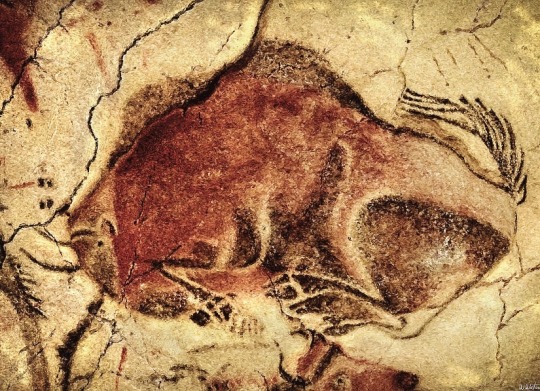

Bison From Cave Of Altamira, Santander, Spain, ca. 10,000 B.C, with artist’s interpretation.
#cave paintings#cave art#bison#paleolithic#petroglyphs#wild animals#animals in art#art history#aesthetictumblr#tumblraesthetic#tumblrpic#tumblrpictures#tumblr art#tumblrstyle#artists on tumblr#tumblrposts#early humans#altamira#spain#national treasure
5K notes
·
View notes
Text
The Stand-in Job
Danny loved his job. It was an easy on call job he got rather on accident. But it paid well and gave him enough time to deal with ghost matters outside of scheduled work hours.
Though now he got stuck in a situation his Boss had not provided him with a script and or explanation how to behave for.
Danny was a simple Stand-in. Sort of like a Stuntman kind of job. His boss was paying him to simple take his place during public appearances, or meetings with no big decision he has to sit through just to listen. Or on the easiest of days, to just sit in his boss office so it appears that someone is there while his boss was doing who knows what. Danny doesn't question, that's why his boss liked him.
But again, no where in his contract was described how he was supposed to handle this situation. So now he was stuck having beat up a couple of wannabe kidnappers and some vigilantes talking to him all casually going on and on how 'Tim', his boss, wasn't supposed to do that to not risk his public image. Should he record this as evidence for his Boss? It sounded like these vigilantes were spilling some of his boss' secrets that shouldn't be known to the public.
Tim just needed someone to sit in his place to make it appear like he was there when he had cases to work through. Danny was the perfect hire for it and Tim liked very much that Danny doesn't ask questions, like he understood. Yet when Danny sent him a text questioning how he should behave as Stand-in in front of Gotham's vigilantes.... Tim wasn't sure if he should feel offended or highly amused about his siblings not realizing that the one kidnapped in public hadn't been Tim but his Stand-in Danny.
#danny fenton#dp x dc#danny phantom#dpxdc#crossover#dcxdp#tim drake#Danny is Tim's Stand-in#they look a lot alike thats why it works#for danny its an easy job#for tim itvgives him the time he needs extra to work on cases#his siblings appear to not realize that at forst#and end up lecturing Danny 'Tim' about not waiting for them to rescue him#danny just saw wannabe kidnappers and with his history beat them up good#random late night thoughts#random early morning thoughts#random idea#sleep avoids me these days...
5K notes
·
View notes
Text
thoughts on "tradwives" as a 19th-century social historian
It's great until it's not.
It's great until he develops an addiction and starts spending all the money on it.
It's great until you realize he's abusive and hid it long enough to get you totally in his power (happened to my great-great-aunt Irene).
It's great until he gets injured and can't work anymore.
It's great until he dies and your options are "learn a marketable skill fast" or "marry the first eligible man you can find."
It's great until he wants child #7 and your body just can't take another pregnancy, but you can't leave or risk desertion because he's your meal ticket.
It's great until he tries to make you run a brothel as a get-rich-quick scheme and deserts you when you refuse, leaving your sisters to desperately fundraise so your house doesn't get foreclosed on (happened to my great-great-aunt Mamie).
It's great until you want to leave but you can't. It's great until you want to do something else with your life but you can't. It's great. Until. It's. Not.
I won't lie to you and say nobody was ever happy that way. Plenty of women have been, and part of feminism is acknowledging that women have the right to choose that sort of life if they want to.
But flinging yourself into it wholeheartedly with no sort of safety net whatsoever, especially in a period where it's EXTREMELY easy for him to leave you- as it should be; no-fault divorce saves lives -is naive at best and dangerous at worst.
Have your own means of support. Keep your own bank account; we fought hard enough to be allowed them. Gods willing, you never need that safety net, but too many women have suffered because they needed it and it wasn't there.
#history#women's history#pregnancy mention#my mother (born 1953) drilled this into me from an early age: have a safety net. have a skill and keep it up to date. have your own money#NEVER join bank accounts. keep a hold on your assets.#well and good to be a stay-at-home wife and mother- I know other lesbians who want that even!#but if your partner is your sole financial support...you're courting danger IMO
2K notes
·
View notes
Text

Stowaway Jim - Ship's Cat of HMS Prince Regent, early 20th century
Came on board at Halifax N.S. November 1914 and passed for O.C. He has since been promoted, and is now C. in.C. of the P.R. Cats. He is an old wardog and bears his battle honours " Dogger Banks" and "Jutland" unostentatiously. O.C. = Ordinary Cat
#naval history#photo#stowaway jim#ship's cat#hms prince regent#early 20th century#age of steam#ship cat sunday
6K notes
·
View notes
Text

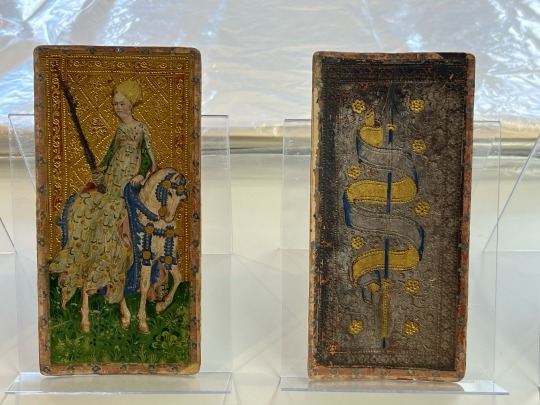
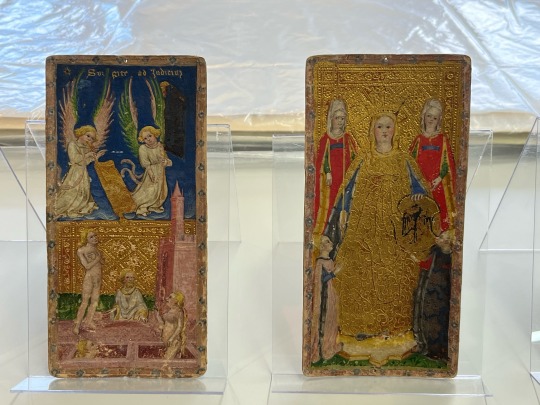

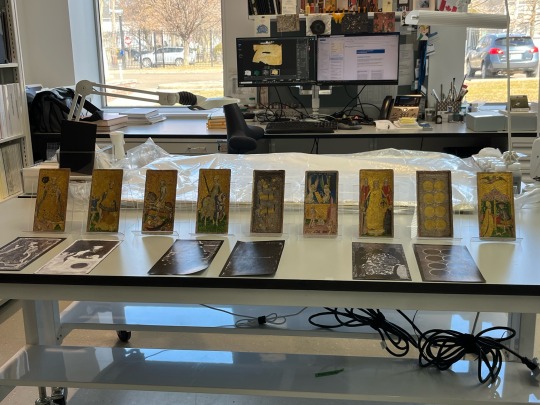
Fifteenth century tarot cards, possibly the oldest known deck. Look how beautiful they are! These are from way back before they were used for cartomancy.
#tarot#tarot cards#divination#cartomancy#tarot history#occult#occultism#medieval#medieval art#early modern
3K notes
·
View notes
Text
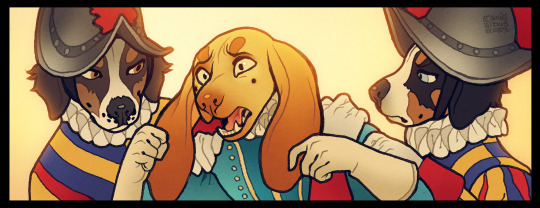
What if I told you that RoobrickMarine went and wrote an entire novella starring my 16th century dog couple? It's very canon-adjacent, well researched and thoughtfully put together, has inspired me a ton during these past months and it's now publicly available at AO3. I highly recommend it.
✦ Separation ✦

#content warnings for sex violence self harm and general angst#six chapters 41K words#people who have asked for longer stories of these two please give this one a look#I've watched this unfold since late may? early july? and it's been an exciting experience#I'm not a writer I think it's better than what I could've come up with#honestly though the way he managed to get inside Machete's and Vasco's heads was uncanny their mannerisms and thought processes are spot on#some of the events aren't canon but they might as well be#and most of the background details and backstory tidbits are accurate believe me he's very well versed on their lore#big history nerd so the worldbuilding is intense#you get to meet the dog pope#there's saint sebastian#roommate hijinks#it gets kind of bleak at times though so be mindful of that#it's not all fluff and good feelings#Separation#Heinaven#RoobrickMarine#own characters#own art#artists on tumblr#CanisAlbus#Vasco#Machete#anthro#sighthound#dogs#canine#animals#if you end up reading the whole thing it would be really sweet if you left a little comment as a thanks for his hard work
6K notes
·
View notes
Video
youtube
I have my own book to talk about as well, of course
#the heir's lair#worldbuilding#alternate universe#society#social hierarchy#empire#new empire#organisation#early history
1 note
·
View note
Text
Joshua Tree National Park
East of San Bernardino and Los Angeles and north of Palm Springs is the Joshua Tree National Park, a U.S. national park. Joshua trees (Yucca brevifolia), indigenous to the Mojave Desert, are the derivation of the name. When the California Desert Protection and Conservation Act was passed by the US Congress in 1994, Joshua Tree, which was initially designated a national monument in 1936, was…

View On WordPress
0 notes
Text

i now understand how certain people felt when harpy eda was revealed 😳
prints here
#toh#the owl house#toh fanart#lilith clawthorne#hooty#toh finale#watching and dreaming#captioned#WOW. WOOO OW. GOODNESS. MA'AM. QPR PLEASE??? PLEASE??? WOW#i both literally am her and i want to kiss her. Wow!#she is the ideal woman. her particularly early 20th century fashion sense. she's a big nerd. she appreciates history. she's aroace. she's a#bird lady who can fly. she has curly hair. Oh Jeez It Does Not Get Better Than That#sorry anyway i cant believe i won twice in a row with ladies (queen and lilith) who are specifically tailored to me and no one else /j#digital art#illustration#a small victory against my art block even though this took like 4 or 5 days to chip through. but i did it#there are some parts i feel a little clueless about so#critiques welcome#lilith please pick me up and fly my gay ass off into the sunset please im beg
8K notes
·
View notes
Text
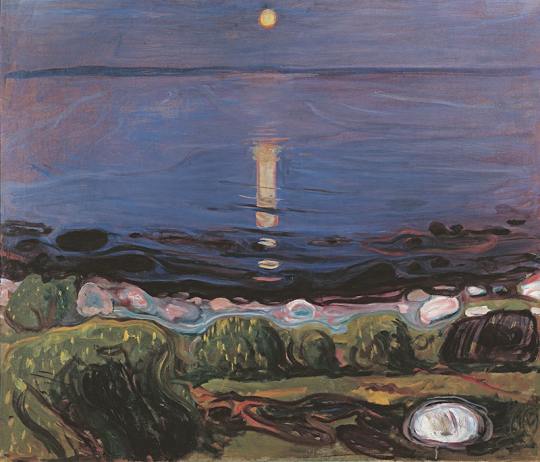
Edvard Munch (Norwegian, 1863-1944) • Summer Night by the Beach • 1902-03
#art#painting#fine art#art history#edvard munch#oil painting#seascape#nocturnal painting#expressionism#norwegian artist#moonlight in paintings#early 20th century scandinavian art#artwork#pagan sphinx art blog#art blogs on tumblr#art lovers on tumblr
2K notes
·
View notes
Text

The Garden of Eden, 1901
Hugh Goldwin Riviere
#Hugh Goldwin Riviere#1900s#early 20th century#black#art#painting#art history#fashion#portrait#gloomy#romance#english art#british art
1K notes
·
View notes
Text

• Woman's Evening Dress: Bodice and Skirt.
Date: 1907
Artist: Designed by Mrs. Dunstan (UnitedStates, active 1891–1913)
Medium: Ivory silk satin with silk tulle, lace, tulle appliqué, rhinestones, and sequins; floss silk, silk chenille, and metallic thread embroidery.
#fashion history#history of fashion#dress#fashion#early 1900s#1900's fashion#1900's dress#1900's#evening dress#bodice#skirt#mrs. dunstan#1907
2K notes
·
View notes
Text
Okay you know what? No more Anglo-Saxon inspired media, books, films, TV shows etc. UNTIL YOU CAN RESPECT THE GODS DAMN SOURCE MATERIAL
#this is about the animated Beowulf film yes#anglo-saxon#early history#old english#english literature
0 notes